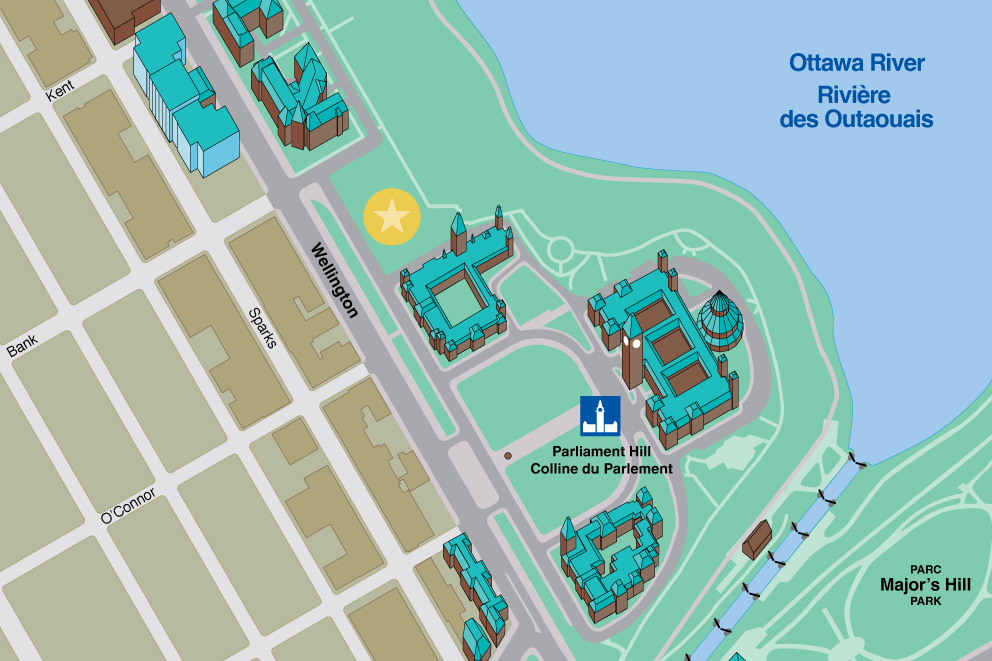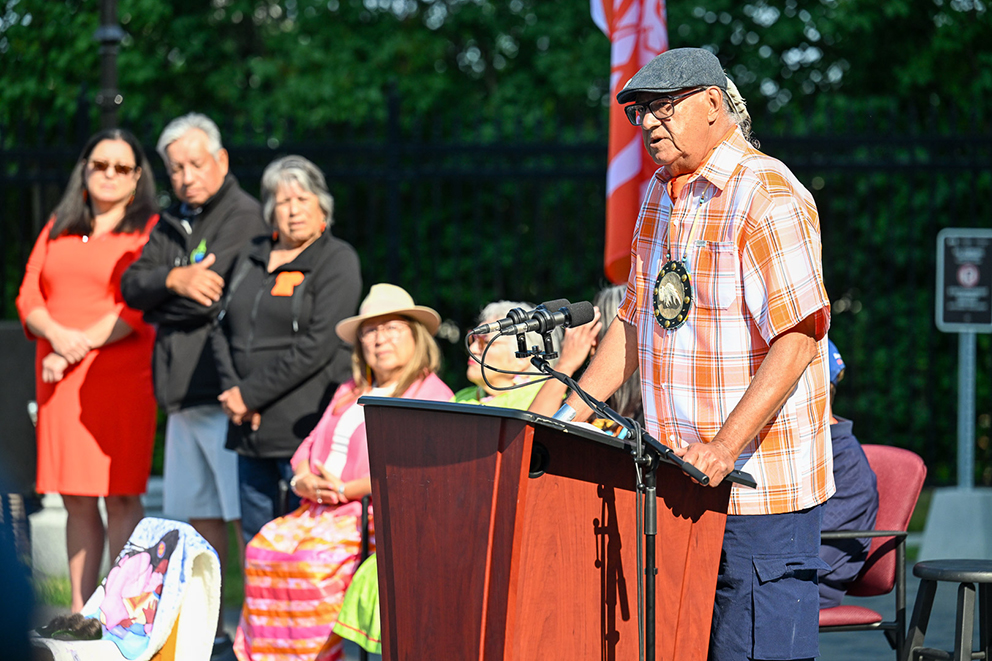Indian Residential Schools National Monument (First Nations, Métis and Inuit)
This page discusses topics that may be distressing and awaken memories of past traumatic experiences and abuse.
The 24-hour National Indian Residential School Crisis Line provides support and emotional and crisis referral services to former residential school Survivors and their families. Dial 1-866-925-4419.
First Nations, Inuit and Métis seeking immediate emotional support can contact the Hope for Wellness Help Line toll-free at 1-855-242-3310, or online by chat. This service is available in English and French, and, upon request, in Cree, Ojibway, and Inuktitut.
The Truth and Reconciliation Commission (TRC) Call to Action #81 calls “upon the federal government, in collaboration with Survivors and their organizations, and other parties to the Settlement Agreement, to commission and install a publicly accessible, highly visible, Residential Schools National Monument in the City of Ottawa to honour Survivors and all the children who were lost to their families and communities.”
On August 10, 2021, the Government of Canada announced $20 million had been set aside to build the national Monument.
Vision Statement
The Indian Residential Schools National Monument (First Nations, Métis and Inuit) is dedicated to honouring Survivors, intergenerational Survivors, their families and communities, while remembering the children who were disappeared or severely impacted. This world-class memorial will serve as both a contemplative space and a sacred gathering place on traditional and unceded Algonquin Anishinabeg Territory on Parliament Hill in Ottawa.
The Monument will also be a site for education and reflection, shedding light on the dark truth of Canada’s historical relationship with First Nations, Métis and Inuit.
It will invite visitors to explore and reflect on the genocide of First Nations, Métis and Inuit by Canada and the churches, as well as the ongoing impact of colonial policies aimed at eliminating First Nations, Métis and Inuit languages, cultures, traditions and kinship bonds.
Monument Objectives
In May 2025, The Indian Residential Schools National Monument Steering Committee (First Nations, Métis and Inuit) has completed the development of the Monument’s vision and objectives. This work builds on the engagement that began at the 2019 Visioning workshop, as well as the selection of the Monument site.
Steering Committee members participated in sessions, which were led by Professional Advisors, Wanda Dalla Costa and Mamie Griffith, from the Royal Architectural Institute of Canada Indigenous Task Force. Through these sessions, members discussed and refined their shared vision for the Indian Residential Schools National Monument (First Nations, Métis, and Inuit) and its objectives.
-
Education
The Monument will educate and inform visitors about the implementation of Indian Residential Schools, the lived experiences and harms perpetrated against those who attended, as well as the impact on their families, communities, and Nations. It will also address the painful legacy of these schools, and the lasting trauma for generations of First Nations, Métis and Inuit. It will be part of a broader educational initiative to convey the truth about Indian Residential Schools in Canada, and to expose and combat denialism. This Monument will illustrate the courage and resilience of Survivors, their families, communities, and Nations.
Healing and Wellness
The Monument will feature designated gathering spaces for reflection, wellness and Ceremony. The Monument will evoke a profoundly emotional experience; it will inspire healing and guide those in need to further resources for support. Care will be taken for the ongoing safety and stewardship of the Monument.
Truth Telling and Reconciliation
The Monument will acknowledge the missing and disappeared children, Survivors, intergenerational Survivors, their families and communities. It will feature a Truth Statement about the role of government and churches and will use the word genocide. It will recognize the lasting impact of the Indian Residential School System and the need for continued truth telling and reconciliation efforts.
The Monument will inspire hope and resilience with its uplifting, and culturally significant design. It will celebrate First Nations, Métis and Inuit cultures, strengths and contributions to Canada. The Monument will support the ongoing advancement of truth telling and reconciliation.
Survivor-led Steering Committee
At the end April 2022 a Survivor-led Steering Committee was established to oversee the Monument project through to its completion, ensuring the project remains grounded in Indigenous values. During the Steering Committee’s initial term, members selected the site and defined the vision and objectives for the Monument.
Current mandate of members of the Committee is coming to an end. In July 2025, Canadian Heritage, in consultation with the National Centre for Truth and Reconciliation, launched a call for interest to recruit new members for the Steering Committee. This new membership will be responsible for overseeing the next phases of the Monument project.
The Site
The site was selected by the Steering Committee with the permission of the Algonquin Anishinabeg Nation. The site is on the ancestral lands of the Algonquin Nation on the west side of Parliament Hill and is highly visible in the heart of downtown Ottawa.


Name of the Monument
The name Indian Residential Schools National Monument (First Nations, Métis and Inuit) reflects historical terminology used during the era of residential schools. This decision was taken in November 2024 by the Indian Residential Schools National Monument Steering Committee (First Nations, Métis, and Inuit). It acknowledges the importance of preserving historical truth to ensure the Monument honours the lived experiences of Survivors. By retaining the term 'Indian,' as defined under the Indian Act, the name serves as a powerful reminder of the systemic injustices endured and the lasting impacts of residential schools. The Monument stands as a call to recognize these truths as a foundation for meaningful reconciliation.